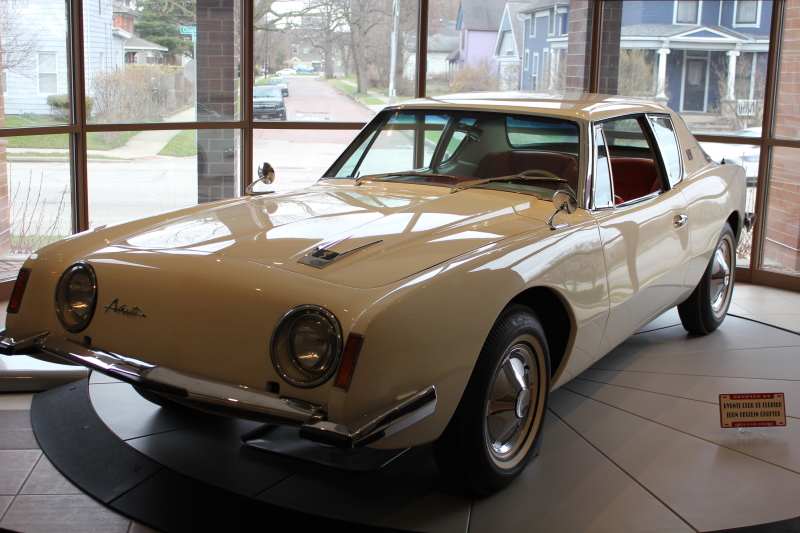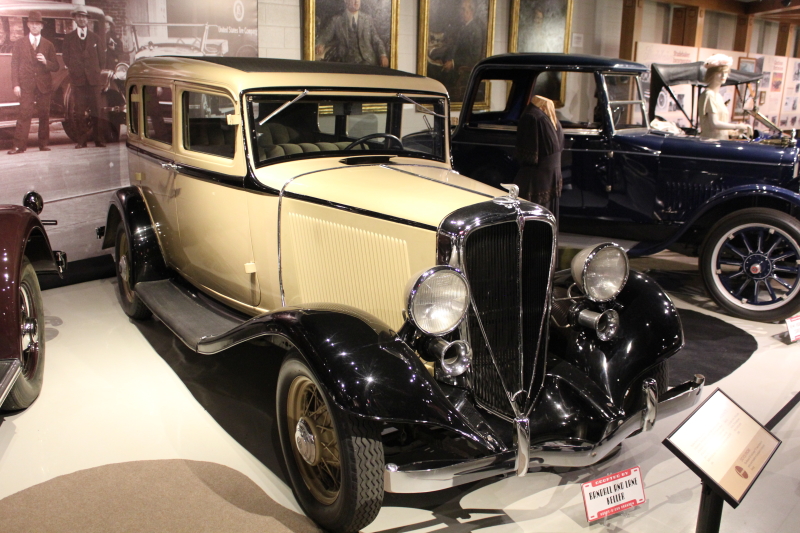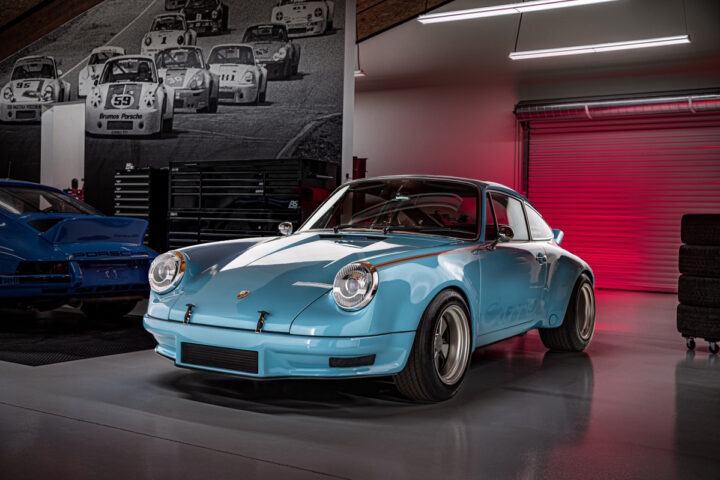by Chris Mulvihill – 05/04/2022
Most folks remember the ‘Big Three’ automakers with few recalling the fourth, Studebaker. Founded in 1852, brothers Henry and Clement opened the H. & C. Studebaker blacksmith shop in South Bend, Indiana. In 1857 an order to build 100 US Army wagons left the expanding company short of capital. Flush with cash earned selling wheel barrels during the California Gold Rush, a third brother John Studebaker bought Henry’s share of the business. A Civil War contract to build wagons for the Union Army fueled more growth and by 1865 the company employed 130 men and showed a profit of $250,000.
In 1868 the business became the Studebaker Brothers Manufacturing Company and by 1890 they were the largest wagon manufacturer in America. Their production facility covered over 95 acres and demand was so great they were sold on 6 continents.
With the introduction of automobiles in the late 1890s, Studebaker management reluctantly decided to enter the car business. This apprehension had Studebaker marketing cars from other manufacturers that were based in Detroit and Ohio. This strategy allowed the South Bend facilities to remain dedicated to wagon production. Introduced in 1902, the first cars were electric with gasoline power offered in 1904. Electric car demand slowed and production stopped in 1911. The focus on gasoline-powered cars was so demanding, that the organization shifted resources away from wagons with production stopping in 1919. The wagon and accessories business was sold in 1920 to the Kentucky Wagon Manufacturing Company of Louisville, KY.
Automobile production brought massive facility growth which in turn grew South Bend. In 1913 Studebaker had produced 35,000 cars making them the fourth largest car manufacturer in America. Production continued to increase through the early 1930s.
In addition to Speed and Endurance, Studebaker used celebrity endorsements forming a subsidiary “Rockne Motors” after the famous University of Notre Dame football coach Knute Rockne. He was also a Sales Executive of the Studebaker Corporation traveling the country and giving motivational speeches to dealers. This division was only in operation for the 1932 and 1933 model years and produced a total of 38,000 cars. Unfortunately, Coach Rockne died in March 1931 before the car was introduced.
The depression hit the country and in March 1933 the Studebaker Corporation fell into receivership. The company reorganized with few cars produced during the depression years. The beginning of WWII saw all American manufacturers focus on the war effort and Studebaker was in the fight.
 Studebaker’s contributions to the war effort were B-17 Flying Fortress engines and the all-terrain Weasel
Studebaker’s contributions to the war effort were B-17 Flying Fortress engines and the all-terrain Weasel“First by Far With a Postwar Car” was the advertising slogan in the late 1940s. Retained by Studebaker in the last 1930s, famous designer Raymond Lowey was heading up the styling department. Sales took off after the war in 1950, seeing just under 400,000 cars and trucks sold and over 23,000 employees. However, labor problems began to plague the company as well as supplier issues. Ford and Chevrolet were in a price war and with Studebaker’s labor costs the highest in the industry, they could not compete. Consequently, by the end of 1954, the company had lost $26M. In an effort to build production economies of scale, Packard merged with Studebaker in 1954 to no avail, as the company was near bankruptcy by 1956.
 This beautiful 1953 Champion Starliner Hardtop was the result of designer Raymond Lowey and Associates with a price of $2,116.
This beautiful 1953 Champion Starliner Hardtop was the result of designer Raymond Lowey and Associates with a price of $2,116.In an effort to boost finances, in 1956 a three-year management deal was struck with air-craft company Curtis-Wright. Interestingly enough, under this agreement, Studebaker became the importer of Mercedes-Benz and some dealers began to sell the brand. In 1959 the new Lark model was introduced contributing over $28M in profits. As the competition began introducing compact cars, Lark sales declined.
The futuristic Avanti was introduced in 1962 and demand was high. Unfortunately, a January 1963 UAW strike stopped production lines for 38 days and dealer orders could not be filled. This combined with the Ohio-based supplier of (fiberglass) Avanti bodies unable to meet production commitments sealed the company’s fate. The last car rolled off the South Bend production line on December 20, 1963. All production operations moved to the Studebaker plant in Hamilton, Ontario, Canada. Needing to produce 20,000 cars at this facility to break even proved to be unobtainable and production stopped in March 1966. In 1967 the Studebaker Corporation became Studebaker-Worthington Corporation. This corporation included brands such as STP, Clarke Floor Machines, and Gravely Tractor. It remained an entity until being acquired by McGraw-Edison in 1978.
Having spent over 3 hours in this museum, I found it extremely well organized with interesting facts on all the display reader cards. The Studebaker story is unique as the brothers founded the business on their father’s creed of “Always give more than you Promise” and were the only wagon manufacturer to successfully make the transition to automobiles. Furthermore, the same issues that faced Studebaker decades ago face car companies today: Building electric cars, parts supplier issues, labor, and manufacturing a reliable, desirable product. The 10,000 members of the Studebaker Drivers Club keep the brand alive on the road with their membership stretching to Australia, Europe, and the UK. The ‘Spirit’ of Studebaker lives in this museum and if your travels bring you close to South Bend, this is a must-see for all car enthusiasts.
Plan your visit at: studebakermuseum.org
About the Author:
Chris Mulvihill founded Classiccaradvisors.com in 2007. His passion for cars began as a young boy walking the service area of his grandfather’s Oldsmobile dealership. After graduating from Indiana University, his automobile knowledge expanded to the factory side as a Ford Motor Company Field Manager based in Los Angeles. During his time on the West Coast, he began attending vintage car events where he established deep-rooted friendships in the classic car industry. His interests are in the history of cars, restoration, and maximizing driving enjoyment.


























